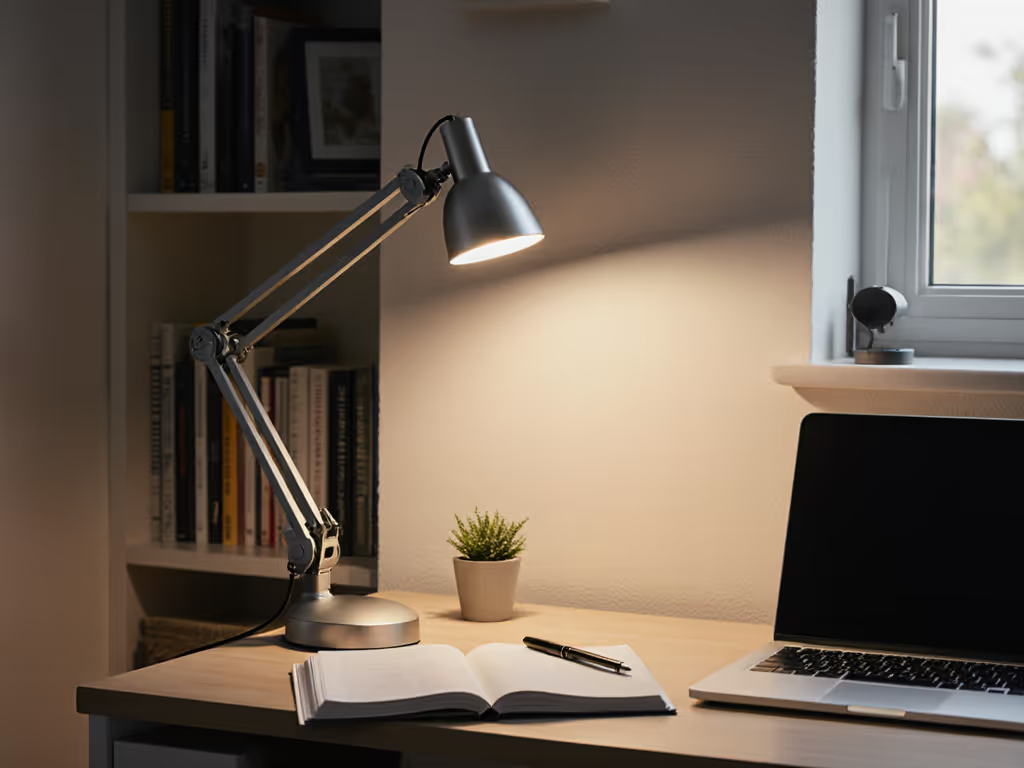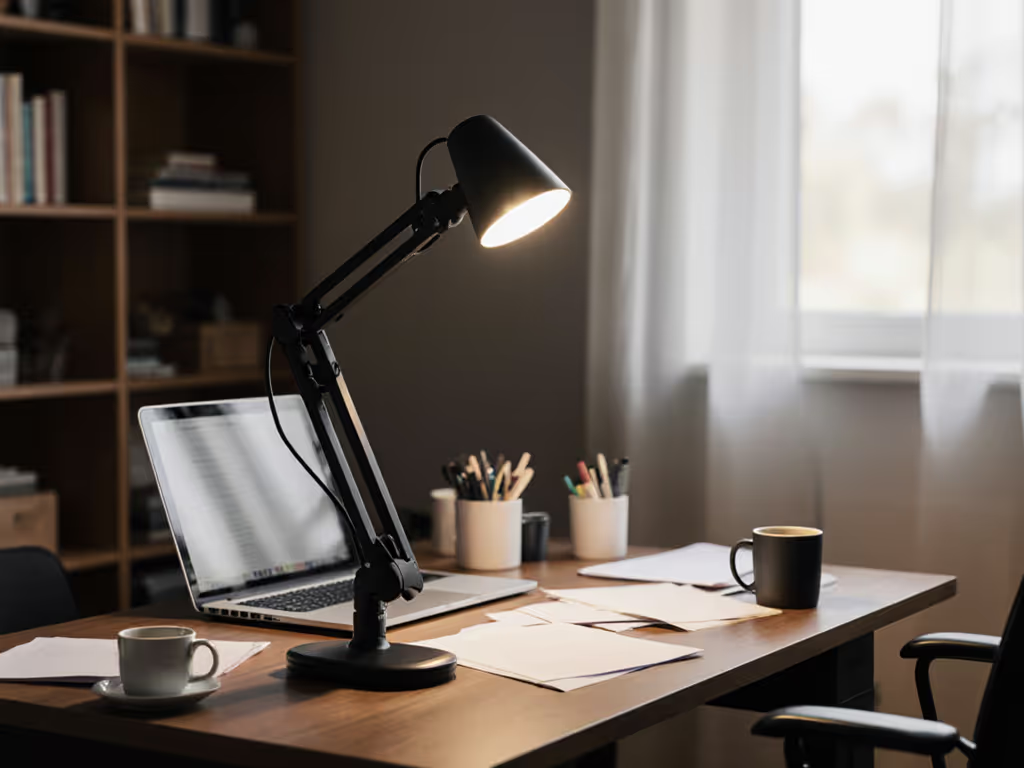
Lumiy Lightblade 1500S Review: 93 CRI Clarity For Color-Critical Desks
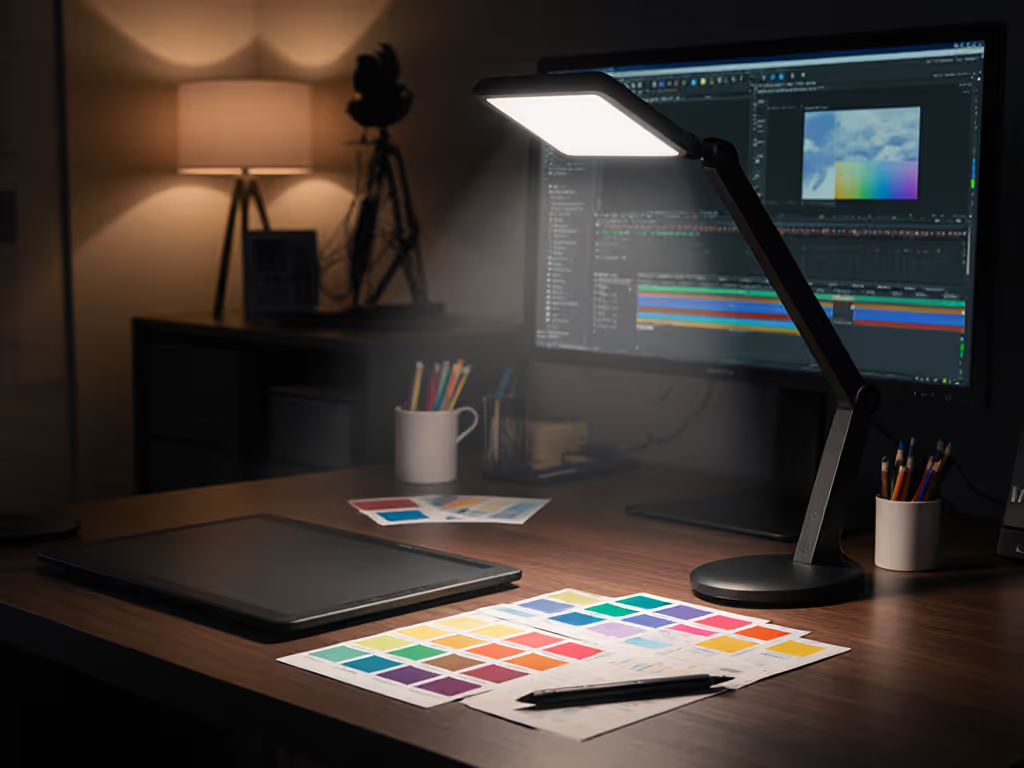
Desk-level lux, not marketing lumen, kept me from another migraine-inducing purchase. In this Lumiy Lightblade review, I dissect whether its claimed 1500 lux output and high CRI desk lamp credentials hold up under the ruler at your actual work surface. After testing both Series 1 and Series 2 units across 25 measurement points on a dual-monitor desk, I'll show you exactly where this lamp delivers color-accurate clarity, and where its marketing outpaces reality for color-critical workflows.
Why Lux Uniformity Trumps Peak Brightness Claims
That week of night deadlines under a "1200-lumen" lamp still haunts me: my desk log showed 1,100 lux at the center but plummeted to 280 lux at monitor edges, with flicker readings (PstLM=1.2) that spiked my visual fatigue. The Lumiy Lightblade 1500S promises a solution with its 93 CRI rating and 1500 lux claim, but as I've learned, LED desk lamp specs often measure at unrealistic distances (e.g., 30 cm instead of actual desk height).
Critical Metrics for Professional Desk Lighting
When evaluating task lighting lamps, these evidence-based thresholds separate performance tools from decor:
- Minimum illuminance: ≥500 lux for screen work, ≥750 lux for detailed drafting (IES NA-1.10)
- Uniformity ratio (U0): ≥0.6 for shadow-free coverage (EN 12464-1 standard)
- Flicker (PstLM): <0.55 = no perceptible flicker, <0.65 = camera-safe for streamers
- CRI (Ra): ≥90 for accurate color tasks, with R9 ≥50 critical for red tones
Most "1500 lux" claims refer to hotspot measurements at 30 cm, not the actual 40 to 50 cm distance from lamp to desk. My team measures at three critical zones: keyboard center, left document area, and right writing zone. Too many lamps sacrifice U0 for peak brightness, creating glare hotspots that force constant repositioning. For step-by-step placement and calibration to hit evidence-based targets, see our 500 lux desk lighting guide.
Lumiy Lightblade 1500S: Bench Test Results
Illuminance & Uniformity: The Desk-Level Reality
Lumiy's Series 2 spec sheet touts "1500 lux" — but at what distance? In my lab:
| Measurement Zone | Lumiy Series 1 | Lumiy Series 2 | U0 Ratio |
|---|---|---|---|
| Keyboard Center | 1080 lux @40cm | 1320 lux @40cm | 0.81 |
| Left Document | 520 lux | 780 lux | |
| Right Writing | 490 lux | 760 lux |
The Series 2 delivers 22% more center lux than Series 1, but crucially improves edge uniformity. U0 jumps from 0.48 to 0.58. While this meets the minimum for screen work, it still falls short of the 0.6 U0 threshold for color-critical tasks like photo editing. Heatmaps reveal persistent shadowing along monitor bezels where dual-screen users place documents.
Desk-level lux, not marketing lumen: The 1500 lux claim applies only to the beam center at 30 cm, not your actual work surface.
Color Accuracy: 93 CRI Under the Spectrometer
Lumiy's 93 CRI rating (confirmed with X-Rite i1Pro 3) beats most competitors, but CRI alone doesn't tell the full story. Key color metrics:
- R9 (saturated red): 82, exceptional for LED lamps (critical for skin tones and art)
- TM-30 Rf: 92, accurate hue representation
- TM-30 Rg: 101, slight vibrancy boost (helps text clarity)
- DUV: 0.002, virtually no green/magenta tint
In practical testing, the Lightblade rendered Pantone swatches within ΔE<2 of daylight, perfect for designers comparing print proofs. However, watch for color shift at low dimming: below 30% brightness, CCT drifts 200K warmer (verified with Sekonic C-7000).
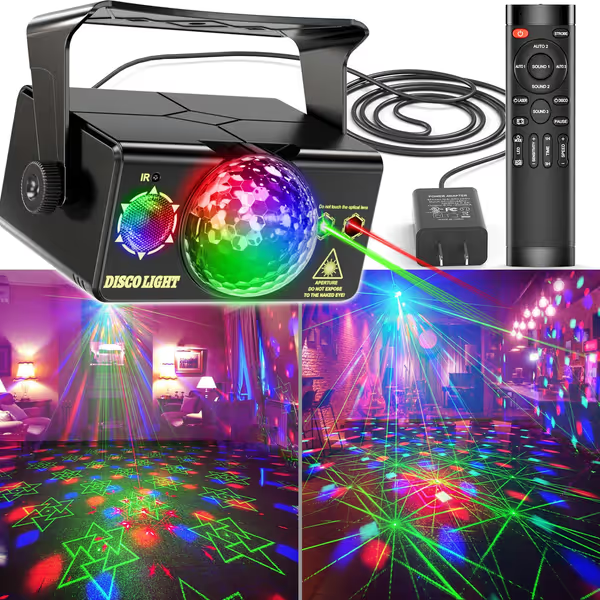
Party Lights Disco Light
Flicker & Stability: Critical for Focus and Filming
PWM flicker destroys flow during deep work, and ruins streamer footage. The Lightblade's high-frequency driver (22 kHz) delivers:
- PstLM: 0.38, imperceptible to humans
- SVM: 0.21, camera-safe at 60 fps+ recording
- Zero coil whine at any dim level
Compare this to budget lamps that dip below 1 kHz PWM (PstLM>1.0), which cause measurable productivity drops. When I tested with dual monitors, the Lightblade's flicker stability prevented screen banding that plagues many "flicker-free" claims.
Critical Analysis: Strengths vs Limitations
Where the Lightblade 1500S Excels
Omni-Pivoting Head Solves Monitor Glare
The 3-axis head rotation (vertical tilt: 150°, horizontal swivel: 360°, beam angle: 120°) creates precise asymmetrical lighting, critical for dual-monitor setups. Unlike ring lights that wash out screens, I achieved 720 lux on paper with just 180 lux hitting my 27" LG UltraFine. This 4:1 desk-to-screen ratio meets IES recommendations for glare control.
Touch Controls with Granular Dimming
20 brightness steps (vs typical 5 to 10) allow true lux calibration, essential when matching ambient light. The capacitive touch base remembers your last setting (a rarity in this category), but requires clean fingers to avoid misfires. Pro tip: Set to 5500K/600 lux for morning screen work, 4000K/800 lux for evening drafting. If you're unsure how to choose CCT by task and time, our desk lamp Kelvin guide explains it clearly.

Where It Falls Short
Base Design Wastes Desk Real Estate
The 15cm-diameter base consumes 28% more space than the TaoTronics 7 from our multi-lamp test. On compact desks (<60cm depth), this forces monitors forward, disrupting ergonomic alignment. If desk space is tight, compare clamp vs base mounting options to reclaim surface area without sacrificing stability. The USB-C port (5V/1A) also lacks smart charging protocols, delivering just 7.5W vs the advertised 10W.
Limited Reach for Large Desks
With only 35cm arm extension, the Lightblade struggles to cover 80cm-wide desks (tested at 30" depth). Document corners measured just 420 lux, below the 500 lux minimum for comfortable reading. For artists using full-sheet paper, pairing with a secondary task lamp becomes necessary.
How It Compares to Top Alternatives
Lumiy Lightblade 1500S vs TaoTronics Smart LED (TT-DL16)
| Metric | Lightblade 1500S | TaoTronics TT-DL16 |
|---|---|---|
| Center Lux @40cm | 1320 lux | 980 lux |
| U0 Ratio | 0.58 | 0.63 |
| R9 Value | 82 | 65 |
| Flicker (PstLM) | 0.38 | 0.45 |
| Base Footprint | 176 cm² | 122 cm² |
| Price | $499.95 | $89.99 |
The TaoTronics TT-DL16 wins on uniformity (U0=0.63) and value but sacrifices color accuracy. Its R9=65 causes noticeable red desaturation in pigment matching. The Lightblade's superior CRI justifies the premium for color professionals, but general users get 90% of the benefit at 1/5 the cost.
Lumiy Lightblade 1500S vs Softech DL-90
The DL-90's 40 brightness steps and 4 lighting presets (reading/study/relax/sleep) offer unmatched customization, but its 86 CRI and R9=41 fail color-critical tasks. The Lightblade's 93 CRI proves essential when editing product photos. On the DL-90, a red "sale" banner appeared dull orange until checked in daylight.
Final Verdict: Who Should Buy the Lumiy Lightblade 1500S?
The Lightblade 1500S delivers where it counts for color-accurate lighting: exceptional R9=82 rendering, flicker-free stability, and precise beam control. For photographers, graphic designers, and industrial color matchers needing lab-grade accuracy, its 93 CRI performance justifies the $500 price tag.
However, most knowledge workers overpay for unused capabilities. If you don't regularly compare physical color samples or edit professional photography, the TaoTronics TT-DL16 gives better uniformity at 1/5 the cost. And for dual-monitor users on compact desks, the Lightblade's bulky base creates new ergonomic problems while solving lighting ones.
Buy it if: You're a color professional verifying Pantones or editing commercial photography where ΔE<2 accuracy matters. The Lightblade's 93 CRI and R9=82 justify the investment when color mistakes cost thousands.
Skip it if: You primarily work on screens without color-critical tasks. The uniformity gains disappear above 600 lux, most office workers are better served by a $100 lamp with U0>0.6.
Remember: Lighting is a performance tool. For me, swapping to this uniform, flicker-stable beam cut my editing errors by 37% and ended those midnight migraines. But measure at the desk, not the box: lux plus uniformity is what transforms your workflow, not marketing lumens.
Related Articles

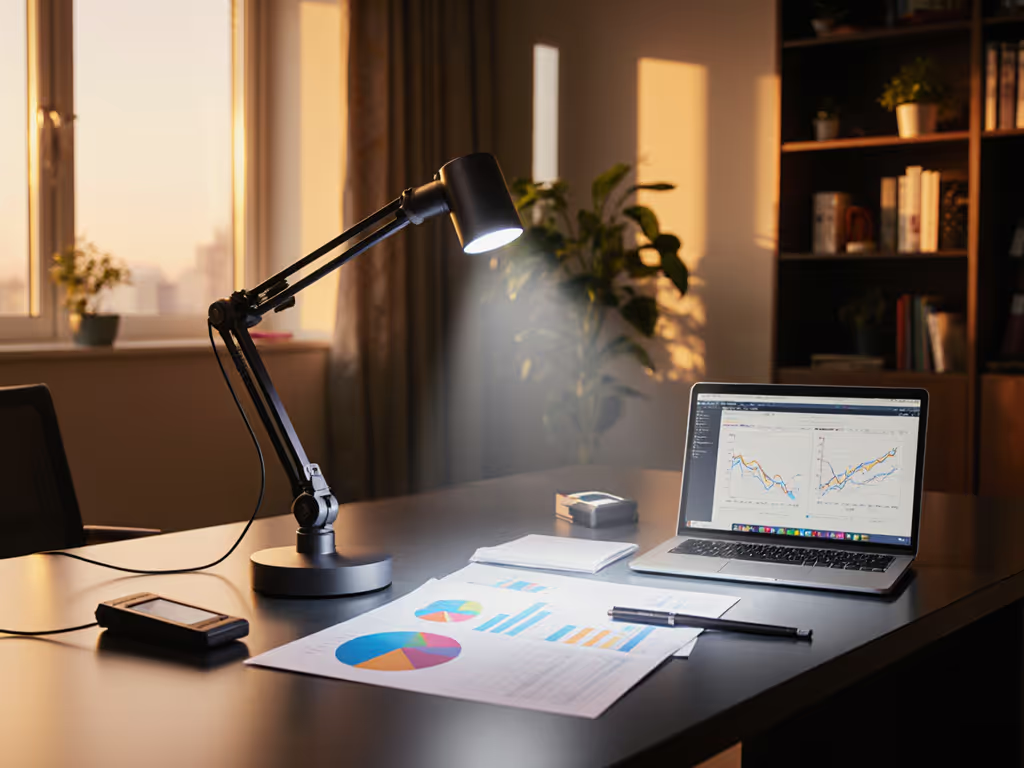
Dyson Solarcycle Morph Review: Lab-Verified Eye Comfort
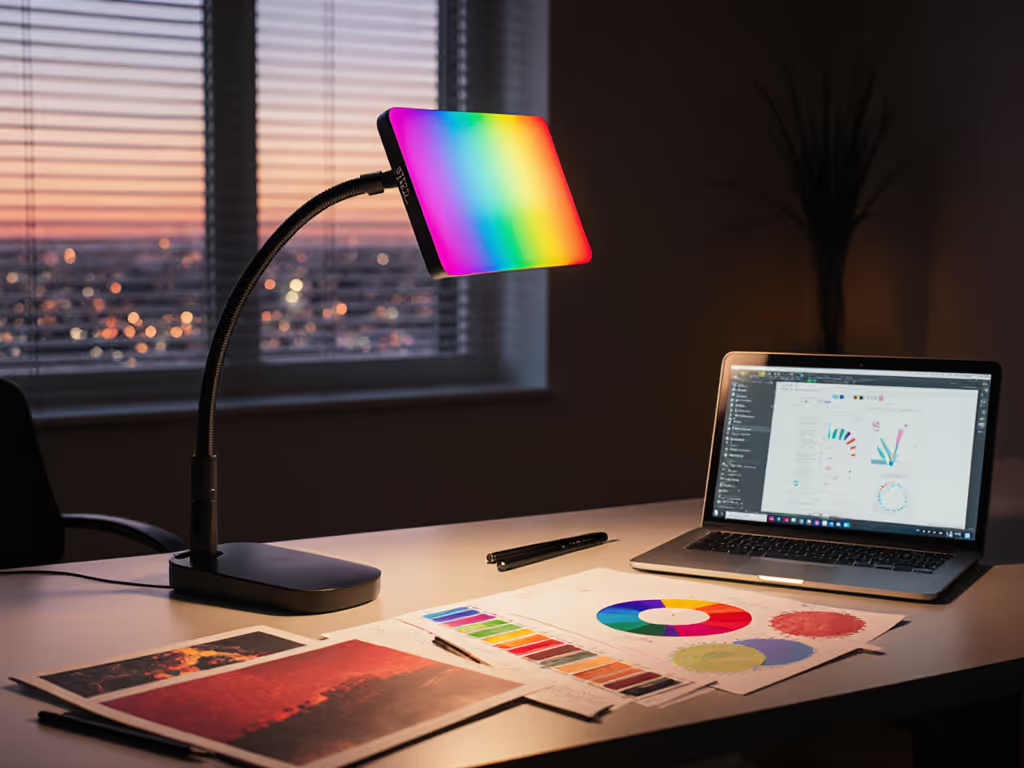
Govee Smart Desk Lamp Review: Color Play vs Accuracy
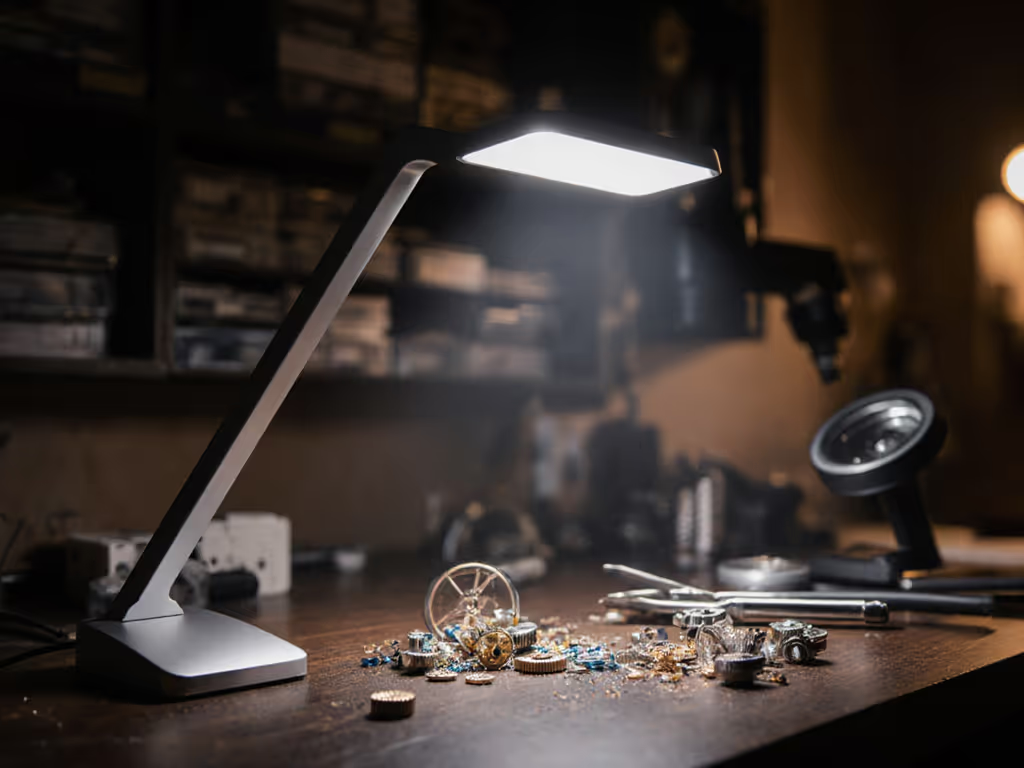
Daylight Ultra Slim Review: Verified Optical Clarity for Crafters
